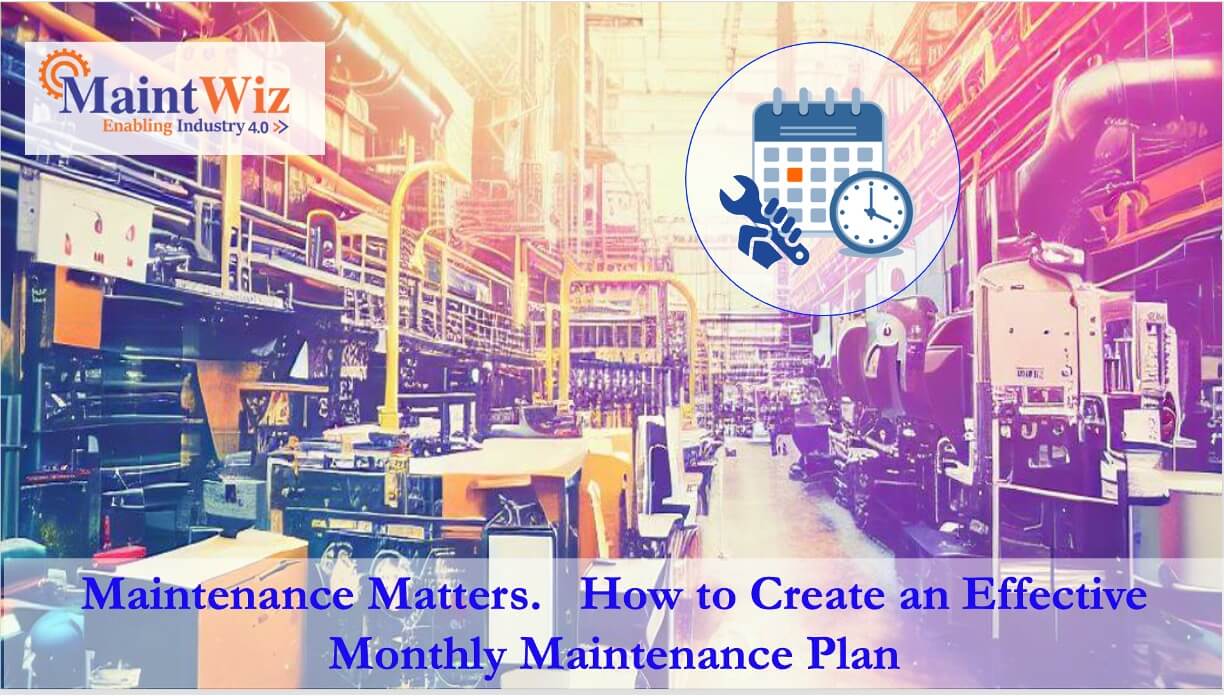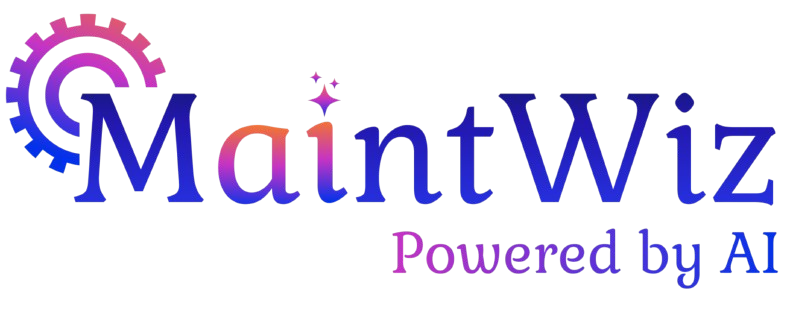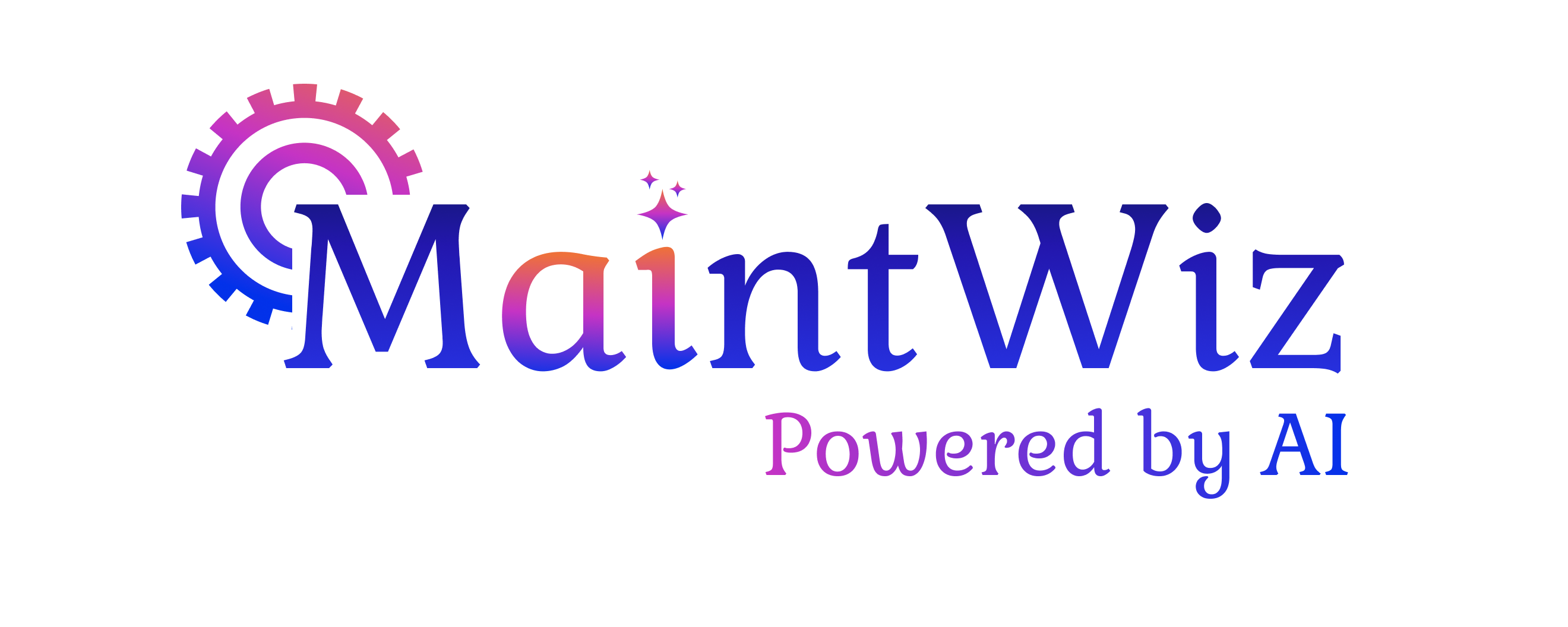
Table of Contents
Introduction
Preventive maintenance is the practice of regularly inspecting and maintaining equipment and systems to prevent breakdowns and downtime. A monthly preventive maintenance plan is an essential part of any asset management and plant maintenance strategy. It helps ensure that equipment and systems are running at optimal efficiency and can identify potential issues before they become critical. Implementing a monthly preventive maintenance plan can help reduce costs, improve productivity, and increase overall equipment reliability.
Definition and Importance of Preventive Maintenance
Preventive maintenance is a proactive approach to equipment maintenance that involves regularly scheduled inspections, cleaning, and repair work. It is designed to prevent equipment breakdowns and extend the lifespan of assets. Preventive maintenance can help identify potential issues before they become serious and costly, reducing downtime and improving overall productivity.
Benefits of Implementing a Monthly Preventive Maintenance Plan
A monthly preventive maintenance plan has several benefits, including:
- Improved equipment reliability and lifespan
- Reduced downtime and maintenance costs
- Better asset management and tracking
- Improved safety and compliance
- Better overall productivity and efficiency
Challenges in Creating a Monthly Preventive Maintenance Plan
Creating an effective monthly preventive maintenance plan can be challenging. Some of the common challenges include:
- Identifying critical maintenance tasks and priorities
- Developing a detailed maintenance schedule
- Assigning tasks and responsibilities
- Establishing metrics and KPIs for measuring PM effectiveness
- Maintenance budgeting and resource allocation
Components of a Monthly Preventive Maintenance Plan
Equipment and Systems to be Maintained
The first step in creating a monthly preventive maintenance plan is identifying the equipment and systems that require maintenance. This can include:
- Machinery and equipment
- Facility infrastructure
- Utilities and HVAC systems
- Transportation vehicles and equipment
- Computer hardware and software
Maintenance Tasks and Procedures
Once you have identified the equipment and systems to be maintained, the next step is to develop a list of maintenance tasks and procedures. This can include:
- Inspections and testing
- Cleaning and lubrication
- Calibration and adjustment
- Repairs and replacement of parts
- Software updates and patches
Frequency and Schedule of Maintenance Activities
The frequency and schedule of maintenance activities will depend on the type of equipment and systems being maintained, as well as the manufacturer’s recommendations
and the organization’s needs. It’s important to balance the need for frequent maintenance with the practicalities of scheduling and resource allocation. Some factors to consider when developing a maintenance schedule include:
- The age and condition of the equipment
- The criticality of the equipment to operations
- The frequency of use and workload on the equipment
- The environmental conditions in which the equipment operates
Roles and Responsibilities of Maintenance Personnel
A successful monthly preventive maintenance plan requires clear roles and responsibilities for maintenance personnel. This can include:
- Assigning specific maintenance tasks to individuals or teams
- Providing training and resources for maintenance personnel
- Establishing communication channels for reporting and tracking maintenance issues
- Ensuring that maintenance personnel have the tools and equipment needed to perform their jobs safely and effectively
Documentation and Record Keeping
Documentation and record-keeping are essential components of a monthly preventive maintenance plan. This can include:
- Maintaining equipment and maintenance logs
- Recording maintenance activities and results
- Tracking maintenance costs and resource allocation
- Monitoring KPIs and metrics for measuring PM effectiveness
Creating a Monthly Preventive Maintenance Plan
Equipment Selection
The first step in creating a monthly preventive maintenance plan is to select the equipment and systems that require maintenance. This can involve a thorough assessment of the organization’s assets, their criticality, and their maintenance history.
Assessing Equipment Failure History and Organization Needs
Assessing the failure history of equipment and systems can help identify patterns and potential issues. It’s also important to consider the organization’s needs and priorities when developing a monthly preventive maintenance plan.
Choosing the Right PM Program – Time-based Maintenance, Condition-based Maintenance, Usage-based Maintenance
When developing a preventive maintenance program, it’s important to consider the specific needs of your organization and the type of equipment being maintained. Three common types of PM programs include time-based, condition-based, and usage-based maintenance. The best choice for your organization depends on various factors such as the equipment age, criticality, and complexity. For instance, condition-based maintenance is ideal for detecting impending equipment failures through continuous monitoring, while time-based maintenance is better suited for equipment that deteriorates predictably over time.
Identifying Critical Maintenance Tasks and Priorities
Identifying critical maintenance tasks and priorities is essential for ensuring that maintenance resources are allocated effectively. This can involve a risk assessment to identify potential equipment failures and their potential impact on operations.
Developing a Detailed Maintenance Schedule
A detailed maintenance schedule should include all the maintenance tasks and procedures required for each piece of equipment or system. It should also include the frequency and schedule of maintenance activities.
Process Standardization – Checklists
Standardizing maintenance processes can help ensure consistency and efficiency. Developing checklists for each maintenance task can help ensure that all steps are completed and documented correctly.
Assigning Tasks and Responsibilities
Assigning specific tasks and responsibilities to maintenance personnel can help ensure that maintenance activities are completed on time and to the required standard. This can involve developing a matrix of tasks and personnel to ensure that all tasks are covered.
Establishing Metrics and KPIs for Measuring PM Effectiveness
Establishing metrics and KPIs for measuring PM effectiveness can help identify areas for improvement and ensure that the monthly preventive maintenance plan is achieving its objectives. Some
example metrics and KPIs include equipment uptime, maintenance costs, mean time between failures, repeat failures, failure after preventive maintenance, and mean time to repair.
Maintenance Budgeting
Developing a maintenance budget can help ensure that adequate resources are allocated to the monthly preventive maintenance plan. This can include estimating the costs of maintenance activities, spare parts, and labor, as well as identifying potential cost savings through preventive maintenance.
Implementing and Monitoring a Monthly Preventive Maintenance Plan
Prioritization and Maintenance Planning
Prioritizing maintenance activities and developing a maintenance plan can help ensure that resources are allocated effectively. This can involve developing a maintenance backlog and prioritizing tasks based on their criticality and impact on operations.
Readiness – Equipment, Resource, Spares, Vendor Support
Ensuring that equipment, resources, spares, and vendor support are available when needed can help minimize downtime and delays. This can involve developing contingency plans and ensuring that spare parts are stocked and readily available.
Training and Communication with Maintenance Personnel
Providing training and clear communication channels for maintenance personnel can help ensure that maintenance activities are completed safely and to the required standard. This can involve developing training materials, providing hands-on training, and establishing clear communication channels for reporting and tracking maintenance issues.
Using Software and Technology for Maintenance Management
Using software and technology for maintenance management can help streamline maintenance processes and improve efficiency. This can include using a CMMS (Computerized Maintenance Management System) to track maintenance activities, generate work orders, and monitor equipment performance.
Metrics to Measure PM Effectiveness
Monitoring metrics and KPIs for measuring PM effectiveness can help identify areas for improvement and ensure that the monthly preventive maintenance plan is achieving its objectives. This can involve regular reporting and analysis of maintenance data and performance metrics.
Analyzing and Improving the Effectiveness of the Maintenance Plan
Analyzing and improving the effectiveness of the maintenance plan is an ongoing process. This can involve regular reviews of maintenance data and performance metrics, identifying areas for improvement, and implementing changes to the monthly preventive maintenance plan as needed.
Best Practices
Some best practices for creating an effective monthly preventive maintenance plan include:
- Regularly reviewing and updating the maintenance plan
- Establishing clear roles and responsibilities for maintenance personnel
- Standardizing maintenance processes and procedures
- Using software and technology for maintenance management
- Monitoring metrics and KPIs for measuring PM effectiveness
Conclusion
Creating an effective monthly preventive maintenance plan is essential for ensuring equipment and systems are running at optimal efficiency and reliability. By following the key components, challenges, and best practices outlined in this guide, organizations can develop a comprehensive and effective monthly preventive maintenance plan that helps reduce costs, improve productivity, and increase overall equipment reliability.
Key Takeaways
- Preventive maintenance is a proactive approach to equipment maintenance that can help reduce costs and improve productivity
- A monthly preventive maintenance plan should include equipment and systems to be maintained, maintenance tasks and procedures, frequency and schedule of maintenance activities, roles and responsibilities of maintenance personnel, and documentation and record-keeping
- Creating a monthly preventive maintenance plan involves equipment selection, assessing equipment failure history and organization needs, choosing
the right PM program, identifying critical maintenance tasks and priorities, developing a detailed maintenance schedule, standardizing processes with checklists, assigning tasks and responsibilities, establishing metrics and KPIs for measuring PM effectiveness, and developing a maintenance budget - Implementing and monitoring a monthly preventive maintenance plan involves prioritizing maintenance activities, ensuring readiness of equipment and resources, providing training and communication with maintenance personnel, using software and technology for maintenance management, monitoring metrics and KPIs for measuring PM effectiveness, and analyzing and improving the effectiveness of the maintenance plan
- Best practices for creating an effective monthly preventive maintenance plan include regularly reviewing and updating the maintenance plan, establishing clear roles and responsibilities for maintenance personnel, standardizing maintenance processes and procedures, using software and technology for maintenance management, and monitoring metrics and KPIs for measuring PM effectiveness
Developing an effective monthly preventive maintenance plan is essential for improving equipment reliability and reducing maintenance costs. If you’re interested in learning more about creating a comprehensive maintenance plan for your organization, contact us today to schedule a consultation with one of our experts.

Jai Balachandran is an industry expert with a proven track record in driving digital transformation and Industry 4.0 technologies. With a rich background in asset management, plant maintenance, connected systems, TPM and reliability initiatives, he brings unparalleled insight and delivery excellence to Plant Operations.
Recent Posts
- From Chaos to Order: Simplifying Maintenance Management with Technology
- From Crisis to Control:Regaining Stability with Effective Breakdown Response
- Avoiding Pitfalls: The 7 Biggest Mistakes Plant Managers Make in Maintenance
- Quality Matters: Improve OEE by Reducing Defects and Rework with MaintWiz CMMS
- How to Implement an Effective Lubrication Program for Your Plant Maintenance Strategy
Recent Comments
Company




